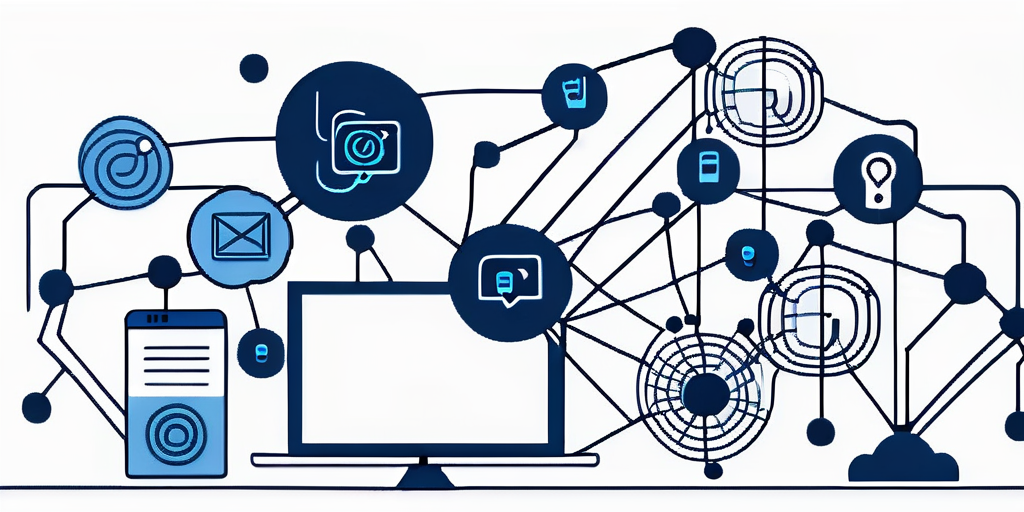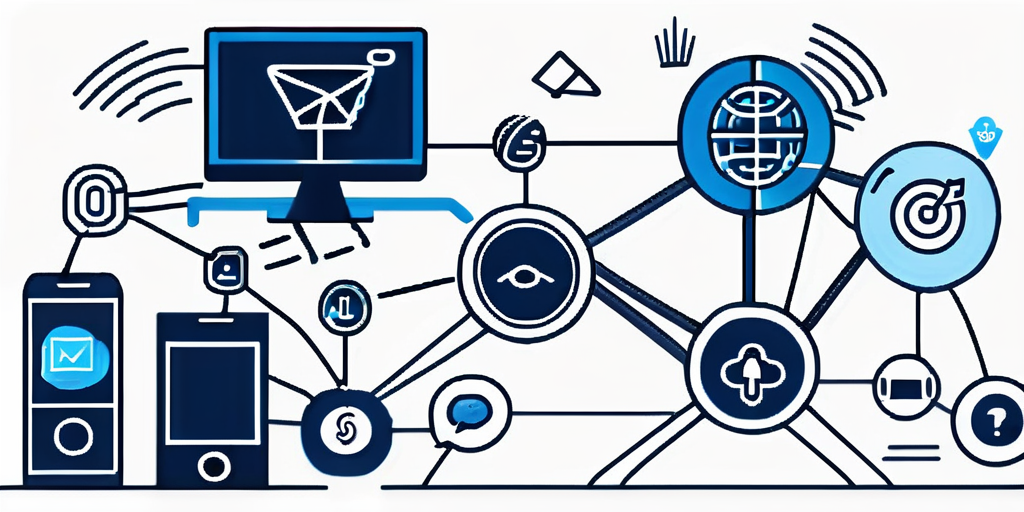Customer Relationship Management (CRM) is a strategic approach that is focused on managing an organization’s relationships and interactions with its customers and potential customers. A CRM system helps companies stay connected to customers, streamline processes, and improve profitability. In the context of lead capture, CRM plays a crucial role in tracking and managing leads from various sources, nurturing them through the sales funnel, and converting them into customers.
Lead capture is an essential part of any business’s sales and marketing strategy. It refers to the process of gathering information about potential customers (leads), with the aim of nurturing them through the sales funnel until they become paying customers. This article will delve into the intricacies of CRM in relation to lead capture, providing a comprehensive understanding of how these two concepts intertwine in a business setting.
Understanding CRM
CRM is a comprehensive approach that enables a business to understand, track and manage its interactions with current, past and potential customers. It involves using technology to organize, automate, and synchronize sales, marketing, customer service, and technical support processes. CRM systems can track and measure marketing campaigns over multiple networks. These systems can track customer analysis by customer clicks and sales.
A CRM system can help a business gain insights into the behavior of their customers and modify their business operations to ensure that customers are served in the best possible way. In essence, CRM helps a business to recognize the value of its customers and to capitalize on improved customer relations. The better you understand your customers, the more responsive you can be to their needs.
Components of CRM
CRM systems consist of several key components. The first is the CRM software, which is the tool that is used to track, manage, and analyze customer interactions. The software can be either on-premise or cloud-based. On-premise CRM systems are installed on the company’s servers and managed by the IT department, while cloud-based CRM systems are hosted on the vendor’s servers and accessed via the internet.
The second component is the CRM data, which is the information about customers that is collected and stored in the CRM system. This data can include basic contact information, purchase history, interaction history, and any other information that is relevant to the customer relationship. The data is used to create a comprehensive customer profile, which can be used to personalize interactions and improve customer service.
Understanding Lead Capture
Lead capture is the process of gathering information about potential customers, or leads, with the aim of nurturing them through the sales funnel until they become paying customers. This process typically involves collecting contact information, such as name, email address, and phone number, as well as any other information that can be used to personalize future interactions.
Lead capture can be done in a variety of ways, including through online forms, social media, events, webinars, and more. The key is to provide value in exchange for the lead’s information, such as a free ebook, a discount code, or access to exclusive content. Once the lead’s information has been captured, it can be entered into the CRM system for tracking and management.
Importance of Lead Capture
Lead capture is crucial for any business that wants to grow and succeed. By capturing leads, a business can build a database of potential customers who have expressed an interest in their products or services. This database can be a valuable resource for marketing and sales efforts, as it allows the business to target their messaging to a receptive audience.
Furthermore, lead capture allows a business to nurture their leads through the sales funnel. By providing valuable content and personalized interactions, a business can build a relationship with their leads, increasing the likelihood that they will become paying customers. In this way, lead capture is not just about gathering information, but about building relationships and driving sales.
CRM and Lead Capture: The Connection
The connection between CRM and lead capture is a vital one. CRM systems provide the tools and capabilities needed to effectively manage and nurture leads. They allow businesses to track interactions with leads, segment leads based on various criteria, automate follow-up communications, and more. In essence, CRM systems provide a framework for managing the lead capture process.

Furthermore, CRM systems can provide valuable insights into the effectiveness of lead capture efforts. By analyzing the data collected in the CRM system, businesses can identify which lead capture strategies are working, which ones are not, and how they can be improved. This can help businesses optimize their lead capture process and increase their conversion rates.
CRM Lead Capture Tools
There are several tools within a CRM system that can aid in the lead capture process. These include lead forms, landing pages, email marketing tools, and more. Lead forms and landing pages can be used to collect information from potential customers, while email marketing tools can be used to nurture leads and guide them through the sales funnel.
Additionally, CRM systems often include analytics tools that can provide insights into the lead capture process. These tools can track the source of leads, the number of leads captured, the conversion rate, and other key metrics. This information can be used to optimize the lead capture process and improve results.
Implementing CRM for Lead Capture
Implementing a CRM system for lead capture involves several steps. The first step is to choose a CRM system that fits the needs of your business. This involves evaluating the features, pricing, and support options of various CRM systems, and choosing the one that best aligns with your business goals and resources.

Once a CRM system has been chosen, the next step is to set up the system for lead capture. This involves configuring the lead capture tools, setting up the lead management processes, and training staff on how to use the system. It’s important to ensure that all staff members understand how to use the CRM system effectively, as this will ensure that leads are managed and nurtured effectively.
Best Practices for CRM Lead Capture
There are several best practices that can help businesses maximize the effectiveness of their CRM lead capture efforts. One of these is to provide value in exchange for a lead’s information. This could be in the form of a free ebook, a discount code, or access to exclusive content. Providing value not only encourages leads to provide their information, but also helps to build a positive relationship with them.
Another best practice is to personalize interactions with leads. This can be done by using the information collected through lead capture to tailor communications and offers to each lead’s interests and needs. Personalization can increase engagement and conversion rates, making it a key strategy for successful lead capture.
Conclusion
In conclusion, CRM and lead capture are two interconnected concepts that are crucial for any business’s success. CRM provides the tools and capabilities needed to manage and nurture leads, while lead capture provides the means to gather information about potential customers and build a database of potential customers. By understanding and effectively implementing these concepts, businesses can improve their customer relationships, increase their sales, and drive their growth.

Whether you are a small business owner looking to implement a CRM system for the first time, or a seasoned marketer looking to optimize your lead capture process, understanding the connection between CRM and lead capture is crucial. With the right tools and strategies, you can turn leads into customers and drive your business’s success.
Frequently Asked Questions
What is Customer Relationship Management (CRM)?
Customer Relationship Management (CRM) is a technology for managing all your company’s relationships and interactions with current and potential customers. A CRM system helps businesses stay connected to customers, streamline processes, and improve profitability. It involves using data analysis about customers’ history with a company to improve business relationships, specifically focusing on customer retention and ultimately driving sales growth.
Why is CRM important for businesses?
CRM is important because it:
- Improves Customer Relationships: By providing a comprehensive view of customer interactions, CRM enables personalized engagement and better service.
- Increases Sales: CRM tools help in managing leads, facilitating sales processes, and closing deals more efficiently.
- Enhances Customer Service: With quick access to customer information, businesses can respond to inquiries and resolve issues faster, improving customer satisfaction.
- Streamlines Marketing: CRM assists in segmenting customers, personalizing marketing efforts, and measuring their effectiveness.
- Boosts Internal Communication: It fosters communication within the company by providing team members with access to the same customer data.
What are the key features of a CRM system?
Key features of a CRM system include:
- Contact Management: Stores customer information such as names, addresses, and social media accounts in a searchable database.
- Interaction Tracking: Logs interactions with customers, including emails, phone calls, and meetings.
- Lead Management: Manages the process of converting prospects into potential sales leads.
- Sales Pipeline Management: Provides a visual representation of where prospects are in the sales process.
- Reporting and Analytics: Offers insights into sales trends, customer behavior, and campaign effectiveness.
What are the benefits of using a CRM system?
The benefits of using a CRM system encompass:
- Centralized Data: Consolidates customer information into a single database that is accessible to all relevant team members.
- Improved Organizational Efficiency: Automates routine tasks and streamlines business processes.
- Data-Driven Decision Making: Utilizes detailed reports and analytics for informed strategic planning.
- Enhanced Customer Experience: Enables personalized and consistent customer interactions across all touchpoints.
- Increased Customer Loyalty and Retention: Helps in understanding and addressing the needs of customers, leading to stronger relationships.
What should businesses consider when choosing a CRM system?
When choosing a CRM system, businesses should consider:
- Business Needs: Evaluate the specific requirements of your business, including size, industry, and customer engagement strategies.
- Usability: Look for a CRM that is intuitive and easy to use to ensure high adoption rates among team members.
- Integration: Ensure the CRM can integrate seamlessly with other tools and systems your business uses, such as email, calendar, marketing automation, and customer service platforms.
- Scalability: Choose a CRM that can grow with your business, accommodating more customers and additional features as needed.
- Cost: Consider both the initial investment and ongoing costs, including subscriptions, training, and customization, to ensure the CRM fits within your budget.